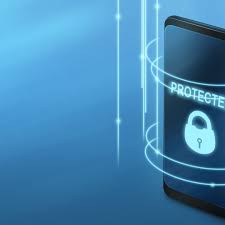
In the wallet PLATFORM' target='_blank' title='digital-Latest Updates, Photos, Videos are a click away, CLICK NOW'>digital age, it's common to download images from the internet and use them as wallpapers on your smartphone. Whether it's a celebrity, a motivational quote, or a scenic view, changing your wallpaper is an easy way to personalize your device. However, downloading photos from untrusted sources and using them as wallpaper can put your phone at risk of being hacked. Here's why and how to protect yourself:
How Downloading Wallpaper Images Can Lead to Security Risks
1. Hidden Malware in Images
While images themselves can't carry viruses in the traditional sense, malicious software can be embedded in images in the form of hidden malware or exploit code. This can occur when:
· Modified images are designed with malicious code that activates when the image is opened or set as wallpaper.
· Images downloaded from untrustworthy websites can contain scripts or viruses that target vulnerabilities in your phone’s operating system.
· Some hackers use malicious image files that appear to be harmless, but when opened, they can exploit flaws in your phone's software and gain access to your personal data.
2. Malicious Links in Image Files
Images downloaded from unverified websites can also contain malicious links embedded within the file. These links can redirect you to fake websites, phishing pages, or malicious apps that steal personal information.
· When you download the image, you may inadvertently click on a hidden link, or the wallpaper file could prompt you to visit a dangerous site or install an app that compromises your phone’s security.
3. Vulnerabilities in Image Downloading Apps or Platforms
Certain apps or websites where images are hosted may have security loopholes. When you download an image from these sources, your phone can be exposed to data theft, unauthorized access, or botnet attacks.
· Even some photo-sharing platforms or third-party apps, especially those not verified or unofficial, could potentially be sources of malware disguised as harmless content.
How Hackers Use Wallpapers to Gain Access to Your Phone
Hackers are clever at using tactics that might seem innocent. Here's how they might use wallpapers to attack:
1. Wallpaper Apps with Hidden Code
There are many wallpaper apps available that provide free images, but some of them might not be secure. These apps could contain hidden malware that becomes active once the image is set as your wallpaper. This malware might run in the background and give hackers unauthorized access to your data.
2. Image Exploits via App Permissions
Some third-party apps may ask for permissions to access your storage or camera, claiming it’s needed for features like downloading wallpapers. However, these permissions could be abused to steal your personal data or install spyware that tracks your activity.
3. Exploiting software Vulnerabilities
Hackers can exploit software vulnerabilities in your phone’s OS or apps when you interact with a compromised wallpaper. Once the wallpaper image is set or the app is used to access it, zero-day exploits or buffer overflow attacks could take control of your device.
Tips to Protect Your phone from Wallpaper-Related Threats
1. Download Images from Trusted Sources
Always ensure that the images you download are from reputable sources, such as official websites or trusted image-sharing platforms (e.g., Shutterstock, Unsplash, Pexels). Avoid downloading images from random links or suspicious websites.
· If you are downloading images from search engines like Google, verify the website and avoid clicking on ads that lead to unknown sites.
· Avoid third-party wallpaper apps unless they are from official app stores and have positive reviews.
2. Use Anti-virus or Anti-malware Software
Install a reliable anti-virus or anti-malware app on your phone. These apps help detect any malicious activity, including malware embedded in downloaded images.
· Apps like McAfee, Norton, and Bitdefender offer comprehensive mobile security to safeguard your phone from viruses, malware, and spyware.
3. Regularly Update Your Operating System and Apps
Ensure your smartphone's operating system and apps are always up to date. Security patches and updates often fix vulnerabilities that hackers may use to exploit your phone.
· Both Android and iOS regularly release security updates. Make sure you install them promptly to protect your device from new threats.
4. Avoid Wallpaper Apps That Request Unnecessary Permissions
If you are using an app to change wallpapers, make sure it doesn’t ask for excessive or unnecessary permissions. Wallpaper apps shouldn’t ask for permissions to access things like your camera, contacts, or microphone.
· Carefully check app permissions before granting access, especially when the app doesn’t require these permissions for its core functionality.
5. Be Cautious with Live Wallpapers and Animated Images
Live wallpapers or animated images can be particularly risky, as they often involve interactive content or scripts that might be able to exploit vulnerabilities. Use static wallpapers whenever possible.
6. Don’t Set Wallpapers from Unverified Sources
While it may be tempting to set wallpapers from random sources on the internet, it’s important to be cautious. Even if an image looks harmless, it might have hidden threats. Always scan images before opening them or setting them as your wallpaper.
Signs That Your phone Has Been Hacked via Wallpaper or Other Means
If your phone has been compromised due to a malicious wallpaper or image download, you might notice:
· Unusual behavior such as slow performance, unresponsive apps, or strange system crashes.
· Unexpected pop-ups or advertisements that appear frequently.
· Data usage spikes without you actively using data-intensive apps.
· Unauthorized apps installed without your consent.
· Battery draining quickly, even when not in use, due to hidden malware running in the background.
Conclusion
While it may seem like a harmless action to change your phone’s wallpaper, downloading images from untrustworthy sources can expose your device to potential hacks, malware, and other security threats. To ensure the safety of your phone and personal data:
· Stick to trusted sources for downloading images.
· Be cautious when using wallpaper apps.
· Keep your phone’s software and security apps updated.
By being aware of the risks and following these precautions, you can enjoy personalizing your device without compromising your security. Stay safe!
Disclaimer:
The views and opinions expressed in this article are those of the author and do not necessarily reflect the official policy or position of any agency, organization, employer, or company. All information provided is for general informational purposes only. While every effort has been made to ensure accuracy, we make no representations or warranties of any kind, express or implied, about the completeness, reliability, or suitability of the information contained herein. Readers are advised to verify facts and seek professional advice where necessary. Any reliance placed on such information is strictly at the reader’s own risk.





 click and follow Indiaherald WhatsApp channel
click and follow Indiaherald WhatsApp channel